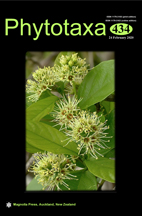Abstract
Three new species of Gyroporus, one from the southern hemisphere (Gyroporus madagascariensis sp. nov.) and two from the northern hemisphere (Gyroporus borealis sp. nov. and Gyroporus smithii sp. nov.), are described. G. madagascariensis is a brownish bolete currently known from Madagascar; it has a mottled pileus somewhat reminiscent of G. mcnabbii, another species known from the southern hemisphere. G. borealis is known from the northeastern United States and is also recorded from the northwestern United States under planted landscape trees. G. smithii corresponds to an orange-colored species that has often been encountered in the United States west and south of the Appalachian Mountains (east of the Great Plains) and is likely often mistaken for G. borealis, which can display orange coloration. Additionally, this study presents evidence that G. roseialbus Murrill and G. subalbellus Murrill, previously synonymized by Rolf Singer, are in fact distinct species.

